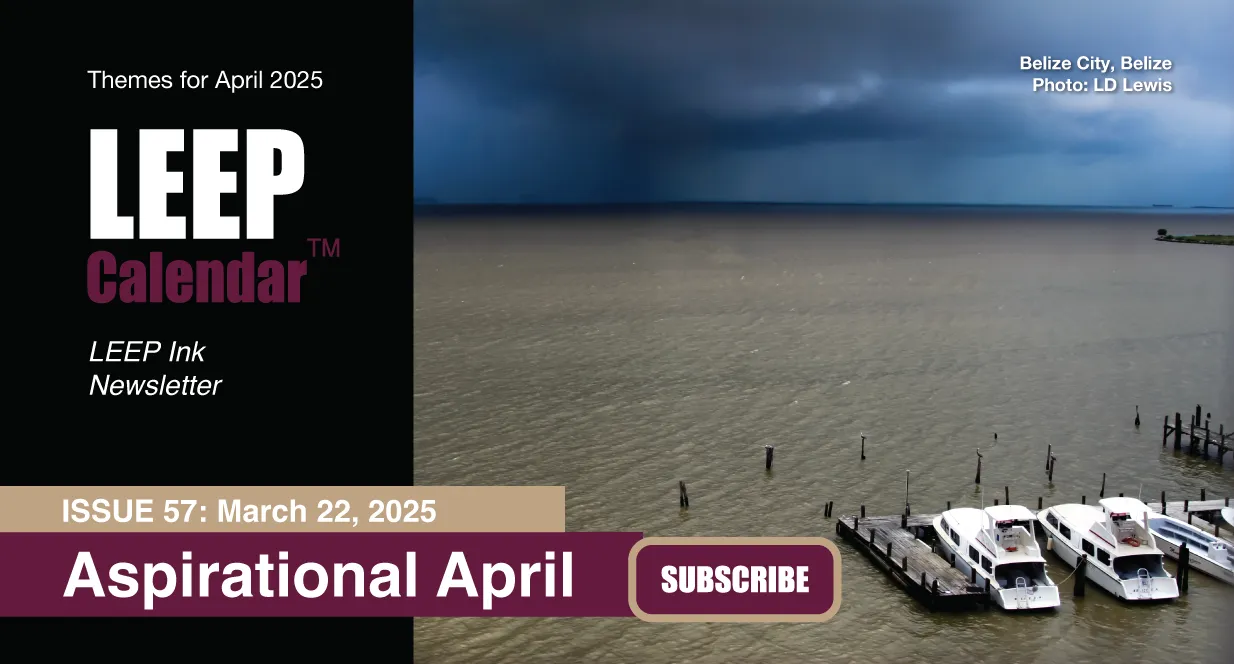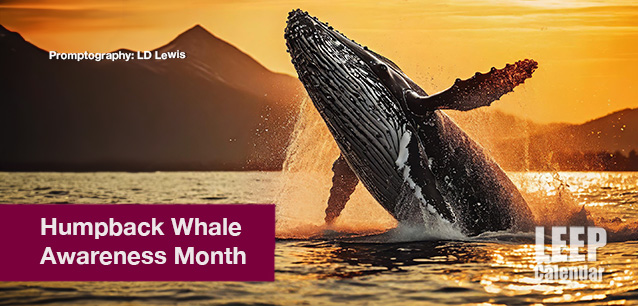 AD
AD
Today is: July 02
Scroll to explore events active on this date.
LEEP INK FEATURES

May Blooms: Events in May 2025
Along with October, May is one of the most densely packed months of the year. It's before the summer humidity and the last whole month of the school year. The weather is warming in t...

Sweet June 2025
The solstice on the 20th marks the onset of summer (Northern Hemisphere) or winter (Southern Hemisphere). Many people, particularly in Europe, North America and Asia, will be embarking o...

Events in April 2025
Spring has sprung in the north, and the first hints of Autumn are on the horizon in the south. April is the month spring (or fall) gets underway, and it is filled with religious celebrations, including the Mu...
About Humpback Whale Awareness Month
Ends: Feb 28, 2025
DESCRIPTION:
Humpback Whale Awareness Month is an environmental observance dedicated to raising awareness about the humpback whale, which has faced numerous threats from human activities. This month-long event highlights the importance of protecting these magnificent marine mammals.
The National Oceanic and Atmospheric Administration (NOAA) champions the event to support its wildlife conservation, research, outreach, and environmental awareness efforts. Humpback Whale Awareness Month is part of a global effort to educate the public about humpback whales, their role in marine ecosystems, and the challenges they face, including habitat destruction, entanglement in fishing gear, and the impacts of climate change.
LIFE OF A HUMPBACK WHALE
Humpback whales are one of the most recognizable and well-studied species of whales, known for their impressive size, distinctive behaviors, and widespread distribution.
Humpback whales sport bumpy heads covered in tubercles and long pectoral fins measuring up to a third of their body length. These gentle giants live in oceans and seas worldwide and are highly migratory. They're known for traveling great distances between their feeding and breeding grounds. During feeding season, they dwell in polar waters, including the Gulf of Maine and the Antarctic, along Norway and Greenland's coasts. For breeding and calving, humpback whales migrate to the warmer waters near Hawaii, the Caribbean, and along the shores of Australia and Madagascar.
Breaching, the act of leaping out of the water and splashing down, is something Humpback whales are famous for. They are also known for their complex and melodic songs. During mating season, male humpbacks produce sounds in patterns that can last for hours.
Humpback whales feed on krill and small schooling fish like herring, mackerel, and capelin. They employ unique feeding techniques, such as bubble-net feeding, where a group of whales swims in a shrinking circle, blowing bubbles below a school of prey to concentrate them in a tight ball. Then whales swim through with their mouths open, capturing large amounts of food.
A humpback whale typically ranges between 45 and 50 years but can live up to 80 years. Once hunted to the brink of extinction, humpback whales have become a symbol of conservation success stories, with some populations rebounding due to international protection efforts.
HUMPBACK WHALE AWARENESS MONTH ACTIVITIES
Humpback Whale Awareness Month activities support education and conservation. These can range from informational campaigns and educational programs to fundraising events for whale conservation projects. Organizations and marine conservation groups often use this month to promote responsible whale-watching practices and advocate for policies protecting marine habitats. Social media is significant in spreading awareness, with individuals and organizations sharing information, photographs, and videos of humpback whales.
While the observance might have varying degrees of recognition in different countries, the message of Humpback Whale Awareness Month resonates globally. Many countries with coastal communities and active marine conservation programs participate in this observance.
VIDEOS
SUPPORTING DOCUMENTS
Currently, this event does not have supporting documents.
ADDITIONAL IMAGES
Currently, this event does not have supporting images.
Where would you like to go now?
 AD
AD


/footer-logo.svg)
